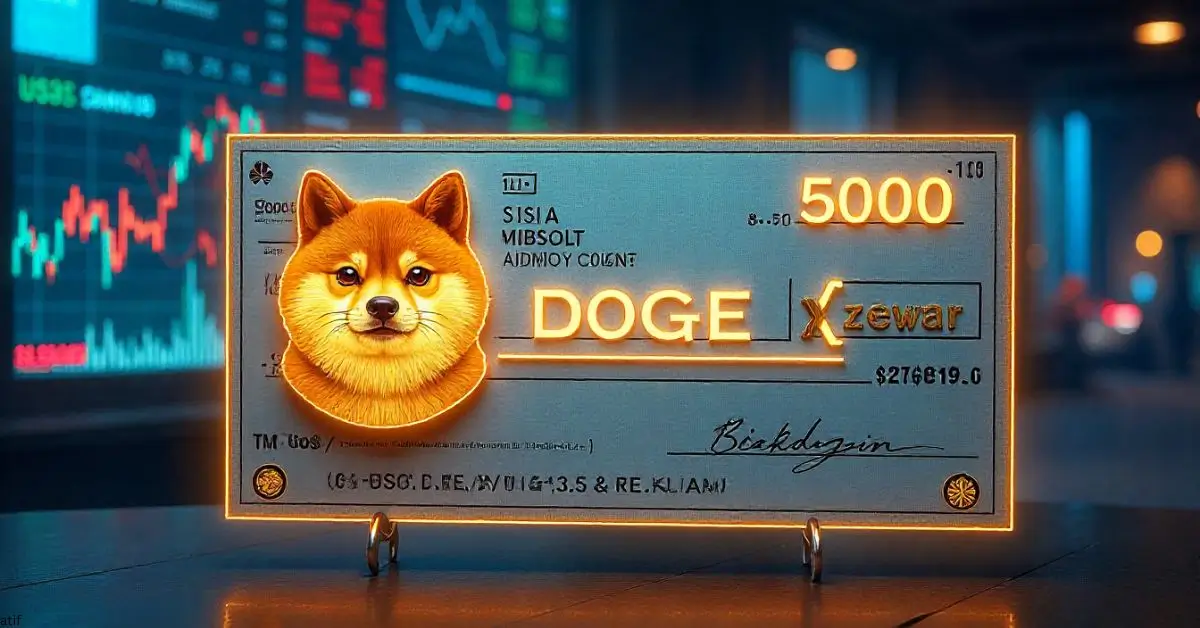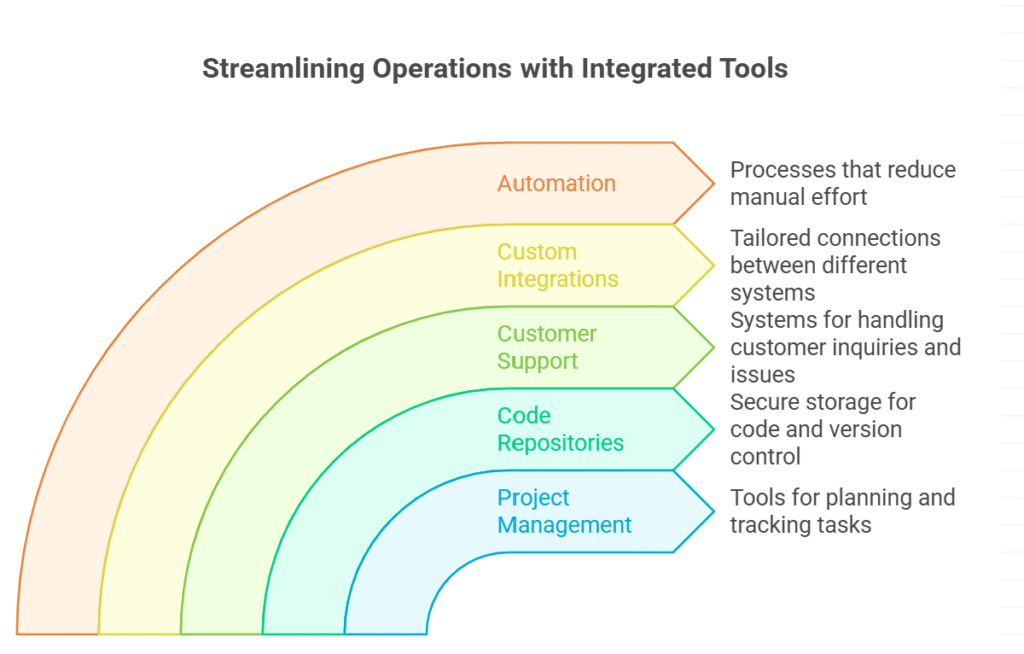BUSNIESS
Convert 5000 Doge Check to USD Instantly

Cryptocurrency investors often find themselves asking the same burning question: “What’s my Dogecoin worth today?” If you’ve recently searched for 5000 doge check, you’re likely curious about the current value of your holdings, how to convert it to USD, and whether holding or selling makes sense in 2025.
The truth is, Dogecoin isn’t just a meme coin anymore. It has matured into a recognized digital asset with real use cases, strong community backing, and global attention. In this article, we’ll break down exactly what 5000 Dogecoin is worth today, how to track its price live, and what to expect from Dogecoin’s future.
Understanding Dogecoin in 2025
Dogecoin started in 2013 as a joke, but over a decade later, it has become one of the top cryptocurrencies by market capitalization. What sets it apart is its low transaction fees, fast transfers, and massive community-driven culture.
As of 2025, Dogecoin is widely used for:
- Online tipping and donations.
- Peer-to-peer transactions.
- Payments at select merchants and e-commerce platforms.
- Trading and long-term investment.
So when you type “5000 doge check,” you’re really asking: How much real-world value does this digital currency hold right now?
Dogecoin Price Check in 2025
To understand Dogecoin value today, let’s start with the basics: the current market price.
- Dogecoin trades like any other crypto asset, meaning its value fluctuates throughout the day.
- Its price is influenced by supply and demand, market sentiment, Bitcoin’s performance, and broader crypto regulations.
- Live updates are available on platforms like CoinMarketCap, Binance, Coinbase, and FintechZoom.
Pro tip: Always cross-check multiple crypto exchanges when doing a Dogecoin price check, since values can differ slightly due to liquidity.
5000 DOGE to USD: The Real Value
So, how much is 5000 Dogecoin worth in USD?
The formula is simple:
5000 DOGE × Current DOGE Price = Value in USD
For example:
- If 1 DOGE = $0.12 → 5000 DOGE = $600.
- If 1 DOGE = $0.25 → 5000 DOGE = $1250.
- If 1 DOGE = $1 (future speculation) → 5000 DOGE = $5000.
This shows why Dogecoin’s price movements matter so much for holders. A small rise can significantly increase your portfolio.
Tracking 5000 Dogecoin Worth with a Live Chart
Nothing beats visuals when it comes to crypto. A Dogecoin live chart allows you to monitor:
- Real-time DOGE price.
- Trading volume.
- Market capitalization.
- Short-term and long-term price trends.
Most traders use platforms like TradingView or Binance’s Dogecoin price chart today to track these changes.
If you’re holding 5000 DOGE, checking these charts regularly helps you decide whether to hold, sell, or accumulate more.
Convert 5000 DOGE to Bitcoin
Another popular search is “Convert 5000 DOGE to Bitcoin.” Many investors compare their Dogecoin holdings to BTC, since Bitcoin is the gold standard of crypto.
Conversion works like this:
5000 DOGE ÷ DOGE/BTC exchange rate = Value in BTC
Example:
- If 1 DOGE = 0.0000025 BTC → 5000 DOGE = 0.0125 BTC.
This can be useful if you’re diversifying or considering moving profits from DOGE into Bitcoin.
Using a Dogecoin Price Calculator
Manually calculating values can be tiring. A Dogecoin price calculator simplifies the process by instantly converting DOGE into USD, EUR, GBP, or BTC.
Most calculators are available on:
- Crypto exchanges.
- Finance portals.
- Dedicated DOGE tracking apps.
Simply enter “5000 DOGE” and select your target currency. Within seconds, you’ll know exactly how much your Dogecoin is worth.
Dogecoin Market Cap Update
One factor influencing price is Dogecoin’s market cap, calculated as:
Current DOGE Price × Circulating Supply
- A high market cap = stable, mature coin.
- A low market cap = higher risk but more room for growth.
As of 2025, Dogecoin still sits among the top 10 cryptocurrencies by market cap, proving it’s far from just a meme.
DOGE to Dollar Conversion in Daily Life
The most practical question is: Can I spend my 5000 DOGE directly?
Thanks to growing adoption, yes. DOGE can be converted into USD through:
- Exchanges (Binance, Coinbase, Kraken).
- Crypto debit cards that let you spend DOGE anywhere Visa/Mastercard is accepted.
- P2P platforms where you trade DOGE for USD directly.
So, that 5000 DOGE check isn’t just about paper value—it’s also about real-world usability.
Dogecoin Investment Value: Should You Hold or Sell?
Owning 5000 DOGE sparks the ultimate question: Is this a smart investment in 2025?
Pros:
- Strong community support (Dogecoin Army).
- Increasing merchant adoption.
- Easy entry point for beginners.
Cons:
- Still highly volatile.
- Influenced by market hype and social media.
- Inflationary supply model (no max cap).
A real user recently tweeted:
“Holding 5000 Dogecoin since 2020—sometimes feels like a rollercoaster, but I’m still here for the long game.”
This highlights the emotional aspect of Dogecoin investing.
Long-Term Outlook for 5000 Doge
Crypto experts remain divided:
- Optimists see DOGE reaching $1+ as adoption grows.
- Skeptics warn it may stagnate without strong development updates.
Still, if you hold 5000 DOGE, you have a stake in one of crypto’s most iconic assets.
Real-Life Example: 5000 DOGE Then vs. Now
In early 2020, Dogecoin was trading around $0.002.
- 5000 DOGE back then = $10.
- By 2021 peak, 5000 DOGE = $3750.
- In 2025, depending on the market, it could range anywhere between $500–$2000+.
This volatility is why investors keep searching for 5000 doge check daily.
How to Securely Store 5000 DOGE
Once you know your coin’s worth, the next step is protecting it.
- Hot wallets: Great for quick trades (e.g., Trust Wallet, Coinbase Wallet).
- Cold wallets: Best for long-term storage (Ledger, Trezor).
- Exchange wallets: Convenient but riskier due to hacks.
For 5000 DOGE, many recommend a hardware wallet to ensure safety.
Risks to Consider in 2025
Before making financial decisions, remember:
- Volatility: Prices can swing 20%+ in a day.
- Regulation: Global crypto laws are still evolving.
- Hype cycles: Social media can pump or dump DOGE quickly.
As with any crypto, never invest more than you’re willing to lose.
FAQ’s
How much is 5000 Dogecoin worth today?
It depends on the live market price. Use a Dogecoin price check tool to convert instantly into USD or BTC.
Can I spend 5000 DOGE directly in stores?
Yes. Many platforms offer DOGE to dollar conversion via crypto debit cards or P2P marketplaces.
Is 5000 Dogecoin a good investment in 2025?
It can be, depending on your risk tolerance. Dogecoin investment value has strong community backing but remains volatile.
How do I track 5000 DOGE in real time?
Use a Dogecoin live chart or price calculator on platforms like Binance, TradingView, or CoinMarketCap.
Conclusion
Doing a 5000 doge check isn’t just about curiosity—it’s about making smarter financial decisions. Whether you’re holding, selling, or converting to Bitcoin, understanding your Dogecoin’s real-time value helps you stay ahead in the fast-moving crypto world.
BUSNIESS
Trading 0.1 ETH: Best Platforms and Fees

For many crypto investors and traders, the number 0.1 ETH may look small, but it carries significant meaning. Whether you’re a blockchain enthusiast, DeFi user, or even a student researching digital assets, knowing the exact worth of 0.1 ETH helps in making smarter financial decisions. From tracking Ethereum’s price volatility to learning how to convert 0.1 ETH into USD, Bitcoin, or local currencies, this guide explains everything you need to know—clearly, simply, and with trusted references.
Ethereum remains one of the most widely used cryptocurrencies in 2025, powering decentralized applications, NFTs, and global financial transactions. Owning even 0.1 ETH can open doors to DeFi opportunities, Web3 projects, and a hedge against inflation in traditional fiat systems.
What Is 0.1 ETH Worth Right Now?
The value of 0.1 ETH changes daily based on the live Ethereum market price. To get the most accurate conversion, users often rely on crypto exchange ETH rates or an Ethereum price calculator.
- Example Conversion (as of today’s live chart):
- 0.1 ETH ≈ $X USD
- 0.1 ETH ≈ Y INR
- 0.1 ETH ≈ Z EUR
Pro Tip: Use exchanges like CoinMarketCap, Binance, or CoinGecko for real-time ETH to fiat conversion.
Why Track the Value of 0.1 ETH?
For both beginners and experienced crypto holders, tracking small amounts of ETH has real advantages:
- Portfolio Management: Even 0.1 ETH can diversify holdings.
- DeFi Participation: Many protocols allow entry with 0.1 ETH.
- Low-Risk Entry: Ideal for students and first-time investors.
- Cross-Border Transfers: Sending 0.1 ETH internationally is faster and sometimes cheaper than traditional banking.
Converting 0.1 ETH into Different Currencies
ETH to USD
If you want to know how much 0.1 ETH is in USD, simply check the ETH price live chart. Tools like Coinbase and Kraken update values instantly.
ETH to Bitcoin
To convert 0.1 ETH to BTC, use exchanges like Binance or KuCoin, which offer secure ETH-BTC trading pairs. Always check transaction fees before converting.
ETH to Local Currencies
- 0.1 ETH in INR: Popular among Indian traders.
- 0.1 ETH in EUR & GBP: Common for European investors.
- 0.1 ETH to PayPal Conversion: Some services allow indirect transfers through peer-to-peer platforms.
Gas Fees for Sending 0.1 ETH
Ethereum gas fees fluctuate depending on network congestion. For 0.1 ETH transfers, fees can range from a few cents to several dollars.
- Layer 2 Solutions like Arbitrum and Optimism reduce transaction costs.
- Stable times (low congestion) are best for moving ETH.
Is 0.1 ETH a Good Investment in 2025?
With Ethereum 2.0 fully rolled out and adoption growing, even a small amount like 0.1 ETH has potential:
- Ethereum Price Volatility: ETH has historically shown strong recovery after downturns.
- Future Growth Predictions: Analysts expect Ethereum to play a central role in DeFi and Web3.
- Entry Point: For beginners, 0.1 ETH provides exposure without high risk.
Expert Reference – CoinDesk notes that Ethereum remains the backbone of decentralized applications.
Expert Reference – Ethereum.org highlights ETH’s use as “digital oil” powering the blockchain.
Expert Reference – CryptoSlate reports institutional interest in Ethereum continues to grow.
Best Platforms to Buy or Trade 0.1 ETH
When looking to trade 0.1 ETH instantly, security and fees are the top priorities.
| Platform | Best For | Features | Fees |
|---|---|---|---|
| Binance | Traders & Investors | Low fees, global access | 0.1% |
| Coinbase | Beginners | Easy UI, fiat on-ramp | 0.5%+ |
| Kraken | Secure transactions | Margin trading, strong security | 0.16% |
| Uniswap | DeFi Enthusiasts | Decentralized trading | Gas fees |
| PayPal | General Users | Direct ETH purchases in-app | Varies |
Predictions for the Future of 0.1 ETH
As Ethereum adoption grows, the long-term potential of even small holdings is significant:
- DeFi Expansion: 0.1 ETH may grant access to yield farming and staking pools.
- Institutional Growth: More firms are adopting ETH as collateral.
- Global Currency Use: ETH is being explored for cross-border settlements.
FAQ’s
How much is 0.1 ETH worth right now?
The live value changes daily. Use a trusted ETH price calculator for accurate results.
What is the price of 0.1 Ethereum in USD?
Check live charts on CoinMarketCap or Binance for real-time USD conversion.
Can I convert 0.1 ETH to Bitcoin safely?
Yes, through exchanges like Binance and Kraken, but always enable two-factor authentication.
Is 0.1 ETH a good investment in 2025?
Yes, it offers a low-risk entry into Ethereum’s growing ecosystem.
Where can I trade 0.1 ETH instantly?
Popular platforms include Binance, Coinbase, Kraken, and decentralized exchanges like Uniswap.
What are Ethereum gas fees for sending 0.1 ETH?
Fees vary but can be reduced using Layer 2 networks like Arbitrum.
Conclusion
Owning 0.1 ETH in 2025 is more than just holding a fraction of Ethereum—it’s a step into the future of finance. Whether you want to track its value, convert it to other currencies, or explore investment opportunities, understanding the worth of 0.1 ETH helps you make informed, secure, and profitable decisions.
BUSNIESS
Chief Experience Officer: Powerful Driver of Success

Chief Experience Officer (CXO) is the executive responsible for overseeing and optimizing every aspect of a company’s customer and employee experience. Unlike traditional roles that focus on a single department, the CXO’s mission is holistic: to break down silos, align teams, and ensure that every interaction—online, offline, internal, or external—delivers value and delight.
Why does this matter? Because in 2025, experience is everything. Customers have endless choices, and employees expect more than just a paycheck. The brands that win are those that make every moment count.
CXO Meaning: More Than Just a Title
So, what’s the real cxo meaning? While “CXO” can refer to any “chief x officer” (like CEO, CFO, or CTO), in today’s business world, it’s most often shorthand for chief experience officer. This role is all about championing the end-to-end journey—whether that’s a customer buying a product, an employee onboarding, or a partner collaborating on a new initiative.
CXOs are the bridge between strategy and execution, data and empathy, technology and humanity.
Chief Experience Officer vs Chief Customer Officer: What’s the Difference?
It’s easy to confuse the chief experience officer with the chief customer officer (CCO). Both roles are focused on experience, but there are key differences:
- Chief Customer Officer: Primarily focused on the customer journey, satisfaction, and loyalty. The CCO is the voice of the customer at the executive table.
- Chief Experience Officer: Broader in scope, the CXO oversees both customer and employee experiences, as well as partner and brand experiences. The CXO’s goal is to create a unified, consistent, and positive experience for everyone who interacts with the company.
In short, all CCOs are CXOs, but not all CXOs are CCOs. The chief experience officer is the next evolution—one that recognizes experience as a company-wide responsibility.

Why Are CXOs in Such High Demand in 2025?
The rise of the chief experience officer is no accident. Several trends are driving demand for CXOs:
- Digital transformation: As companies digitize, the customer journey becomes more complex—and more important to manage.
- Employee experience: Happy employees create happy customers. CXOs ensure both are prioritized.
- Brand differentiation: In crowded markets, experience is often the only thing that sets you apart.
- Data-driven insights: CXOs use analytics to understand pain points and opportunities across the entire journey.
A recent tweet summed it up:
“Our new CXO turned our onboarding from a headache into a highlight. Employee retention is up, and so is customer satisfaction.”
What Does a Chief Experience Officer Actually Do?
The day-to-day of a chief experience officer is as varied as the companies they serve. Here’s what you’ll typically find on a CXO’s agenda:
- Mapping the journey: Analyzing every touchpoint, from first website visit to post-purchase support.
- Aligning teams: Breaking down silos between marketing, sales, product, HR, and support.
- Driving culture: Embedding a customer- and employee-first mindset across the organization.
- Measuring impact: Using NPS, CSAT, EX, and other metrics to track progress.
- Innovating: Piloting new technologies, processes, and experiences to stay ahead of the curve.
The Skills and Qualities of a Great CXO
Landing one of the top chief experience officer jobs requires a unique blend of skills:
- Empathy: Understanding the needs and emotions of customers and employees.
- Data literacy: Turning analytics into actionable insights.
- Leadership: Inspiring teams and driving change.
- Cross-functional expertise: Navigating marketing, HR, IT, and operations.
- Vision: Seeing the big picture and connecting the dots.
Chief Experience Officer Jobs: What Employers Are Looking For
If you’re eyeing a chief experience officer job in 2025, here’s what recruiters want to see:
- Proven track record in customer experience, employee engagement, or digital transformation.
- Experience leading cross-functional teams.
- Strong communication and storytelling skills.
- Ability to design and implement experience strategies at scale.
- Familiarity with CX and EX tools (like Qualtrics, Medallia, or ServiceNow).
Real-World Example: CXO Impact in Action
A global retailer hired a new CXO to tackle declining customer loyalty and high employee turnover. Within a year, the CXO launched a unified feedback platform, revamped training, and introduced a new rewards program. The result? NPS scores jumped 20 points, and voluntary turnover dropped by 30%. The CEO called it “the best investment we’ve made in a decade.”
The Future of CXOs: Trends to Watch in 2025
- AI-powered personalization: CXOs are leveraging AI to deliver hyper-personalized experiences at scale.
- Hybrid work: Employee experience is now as important as customer experience, especially with remote and hybrid teams.
- Sustainability and purpose: CXOs are leading the charge on ethical, sustainable, and purpose-driven experiences.
- Experience as a service: More companies are offering experience-driven subscriptions and memberships.
CXOs and the C-Suite: Collaboration or Competition?
As the number of C-level roles grows, some wonder if there’s overlap or even competition. In reality, the best organizations see the chief experience officer as a collaborator—working closely with the CEO, CMO, CHRO, and CTO to align strategy and execution.
CXOs are often the glue that holds the C-suite together, ensuring that every decision is made with the end-user in mind.
The Risks and Challenges of the CXO Role
No role is without its challenges. For CXOs, the biggest risks include:
- Siloed data: Without access to all the right data, it’s hard to see the full picture.
- Change resistance: Not everyone loves change, especially when it means rethinking old processes.
- Measuring ROI: Experience is sometimes hard to quantify, making it tough to prove value.
- Role confusion: Overlap with other C-level roles can create turf wars if not managed well.
Pros and Cons of Having a Chief Experience Officer
Pros
- Holistic view: Ensures every touchpoint is optimized.
- Faster innovation: Breaks down silos and speeds up change.
- Stronger brand: Consistent, memorable experiences build loyalty.
- Employee engagement: Happy teams deliver better results.
Cons
- Potential overlap: Can duplicate efforts with other roles.
- Requires buy-in: Needs support from the entire C-suite.
- Hard to measure: ROI can be tricky to track.
How to Become a Chief Experience Officer in 2025
- Build a diverse background: Experience in marketing, HR, product, or operations is a plus.
- Develop your data skills: Learn to use analytics to drive decisions.
- Practice empathy: Put yourself in the shoes of customers and employees.
- Lead cross-functional projects: Show you can break down silos.
- Stay curious: The best CXOs are always learning and adapting.
FAQs
Q. What does a chief experience officer do?
A. chief experience officer oversees and optimizes the end-to-end experience for customers, employees, and partners, ensuring every interaction is positive and aligned with the brand.
Q. What is the cxo meaning in business?
A. CXO typically refers to “chief experience officer,” but can also mean any “chief x officer” in the C-suite. In 2025, it’s most often used for the executive in charge of experience strategy.
Q. How is a chief experience officer different from a chief customer officer?
A. chief customer officer focuses on the customer journey, while a chief experience officer covers both customer and employee experiences, as well as partner and brand touchpoints.
Q. What skills are needed for chief experience officer jobs?
A. Key skills include empathy, data literacy, leadership, cross-functional expertise, and a strategic vision for experience design.
Final Thoughts
In 2025, the chief experience officer isn’t just a trend—it’s a necessity. As competition intensifies and expectations rise, companies that invest in experience will win the hearts (and wallets) of customers and employees alike.
BUSNIESS
Digital Workspace: Unlock Powerful Productivity

Digital Workspace is a unified, cloud-based environment where employees can access all the tools, files, and applications they need to do their jobs—anytime, anywhere, on any device. Think of it as your virtual office: a place where you can chat with colleagues, join meetings, manage projects, and access company resources, all from a single dashboard.
But a digital workspace is more than just a collection of apps. It’s about creating a seamless, secure, and personalized experience that empowers people to work smarter, not harder.
Why Digital Workspaces Matter in 2025
The way we work has changed forever. Hybrid and remote work are now the norm, not the exception. Employees expect flexibility, and companies need to support collaboration across time zones and continents. That’s where the digital workspace comes in.
User quote:
“Switching to a digital workspace was a game-changer for my company. Now, I can see my company view of projects, deadlines, and team updates in one place—no more endless email threads or lost files.”
Key Features of a Modern Digital Workspace
What sets a true digital workspace apart from a simple collection of tools? Here are the must-have features in 2025:
- Unified access: One login for all your apps, files, and communications.
- Cloud based productivity suites: Google Workspace, Microsoft 365, and similar platforms that offer docs, spreadsheets, presentations, and more.
- Collaboration tools: Real-time chat, video meetings, and shared workspaces.
- Personalization: Custom dashboards, notifications, and workflows tailored to each user.
- Security: End-to-end encryption, multi-factor authentication, and compliance controls.
- Device flexibility: Seamless experience across laptops, tablets, and smartphones.
- Integration: Connects with third-party apps like Slack, Zoom, Trello, and even industry-specific tools.
My Company View: The Power of Visibility
One of the most powerful aspects of a digital workspace is the ability to get a my company view—a real-time snapshot of what’s happening across your organization. Managers can track project progress, spot bottlenecks, and celebrate wins. Employees can see how their work fits into the bigger picture.
This transparency boosts accountability, engagement, and trust. No more working in silos or wondering what other teams are up to.
Real-World Example: Airbnb Moab’s Digital Transformation
Let’s look at how a real company is using digital workspaces to drive success. Airbnb Moab, a property management company, faced challenges coordinating between field staff, cleaners, and remote managers. By adopting a cloud based productivity suite and integrating it with their booking and scheduling apps, they created a single source of truth for everyone.
Now, team members can update property status, communicate instantly, and access checklists from their phones. The result? Faster turnovers, fewer mistakes, and happier guests.
App LLC: Building a Digital Workspace for Startups
App LLC, a fast-growing SaaS startup, needed a digital workspace that could scale with their team. They chose a platform that combined project management, code repositories, and customer support in one place. With custom integrations and automation, they reduced manual work and improved response times.

Cloud Based Productivity Suites: The Heart of the Digital Workspace
At the core of every digital workspace are cloud based productivity suites. These platforms—like Google Workspace, Microsoft 365, and Zoho—offer everything from email and calendars to document editing and file storage.
Why are they so essential?
- Real-time collaboration: Multiple people can work on the same document at once.
- Automatic backups: No more lost files or version confusion.
- Access anywhere: Work from home, the office, or a coffee shop.
- Easy sharing: Control who can view, edit, or comment on files.
In 2025, these suites are smarter than ever, with AI-powered suggestions, voice commands, and seamless integration with other business tools.
The Benefits of a Digital Workspace
Increased Productivity
No more switching between apps or searching for files. Everything you need is in one place, saving time and reducing frustration.
Better Collaboration
Chat, video, and shared documents make teamwork easy—even if your team is spread across the globe.
Enhanced Security
Centralized controls and advanced security features protect sensitive data and ensure compliance.
Flexibility and Mobility
Work from anywhere, on any device. Perfect for hybrid and remote teams.
Cost Savings
Reduce the need for physical office space, paper, and on-premises servers.
Risks and Challenges of Digital Workspaces
Of course, digital workspaces aren’t perfect. Here are some potential pitfalls:
- Security risks: If not properly managed, cloud platforms can be vulnerable to breaches.
- Change management: Employees may resist new tools or struggle with adoption.
- Integration headaches: Not all apps play nicely together.
- Overload: Too many notifications or tools can overwhelm users.
Pro tip: Invest in training, choose platforms with strong security, and regularly review your digital workspace setup.
How to Choose the Right Digital Workspace for Your Team
With so many options, how do you pick the best digital workspace? Consider:
- Your team’s size and needs: Startups may need flexibility; enterprises may need advanced controls.
- Integration: Does it work with your existing tools?
- Security: Look for compliance certifications and robust controls.
- User experience: Is it easy to use and customize?
- Support: Reliable customer service and training resources.
Setting Up Your Digital Workspace: Step-by-Step
- Assess your needs: What are your must-have features?
- Choose a platform: Compare cloud based productivity suites and collaboration tools.
- Migrate data: Move files, emails, and contacts to the new workspace.
- Integrate apps: Connect third-party tools for a seamless workflow.
- Train your team: Offer onboarding and ongoing support.
- Monitor and optimize: Gather feedback and make improvements.
Digital Workspace and the Future of Work
In 2025, the digital workspace is more than a trend—it’s the foundation of the modern workplace. As AI, automation, and remote work continue to evolve, expect digital workspaces to become even more intelligent, personalized, and secure.
Imagine a workspace that anticipates your needs, automates routine tasks, and connects you with the right people at the right time. That’s the future we’re heading toward.
FAQs
Q. What is a digital workspace and how does it work?
A. digital workspace is a cloud-based platform that brings together all the tools, files, and communications employees need. It works by integrating apps, data, and workflows into a single, secure environment accessible from any device.
Q. How can I get a “my company view” in a digital workspace?
A. Most digital workspace platforms offer dashboards or analytics that provide a real-time overview of projects, tasks, and team performance. Customize your dashboard to see the metrics that matter most to you.
Q. What are the best cloud based productivity suites for digital workspaces?
A. Top options in 2025 include Google Workspace, Microsoft 365, Zoho Workplace, and specialized platforms for industries like real estate or hospitality.
Q. How do companies like Airbnb Moab and App LLC use digital workspaces?
A. They use digital workspaces to centralize communication, automate workflows, and enable remote collaboration. This leads to faster decision-making, fewer errors, and better customer experiences.
Final Thoughts
The digital workspace is no longer optional—it’s essential for productivity, collaboration, and growth in 2025. Whether you’re managing a global team or just want to work smarter, investing in the right digital workspace can transform your business.
-

 ENTERTAINMENT4 months ago
ENTERTAINMENT4 months agoTesla Trip Planner: Your Ultimate Route and Charging Guide
-

 BUSNIESS4 months ago
BUSNIESS4 months agoCareers with Impact: Jobs at the Australian Services Union
-

 TECHNOLOGY4 months ago
TECHNOLOGY4 months agoFaceTime Alternatives: How to Video Chat on Android
-

 BLOG4 months ago
BLOG4 months agoStep Into Rewards: The Nike Credit Card Advantage
-

 BLOG4 months ago
BLOG4 months agoCamel Toe Explained: Fashion Faux Pas or Body Positivity?
-

 FASHION4 months ago
FASHION4 months agoWrist Wonders: Handcrafted Bracelet Boutique
-

 BUSNIESS3 months ago
BUSNIESS3 months agoChief Experience Officer: Powerful Driver of Success
-

 BLOG4 months ago
BLOG4 months agoWanderWomen: A Mother-Daughter Journey
